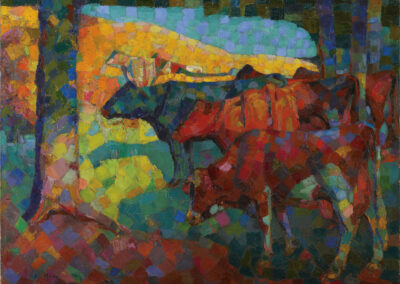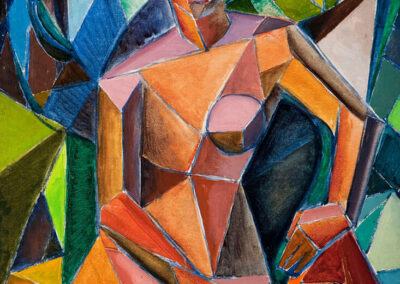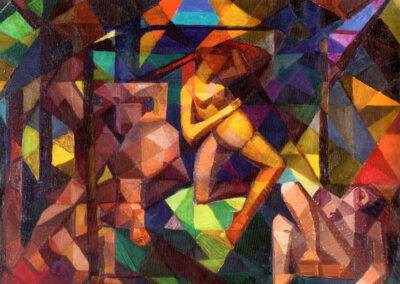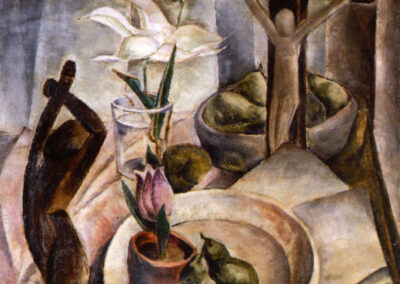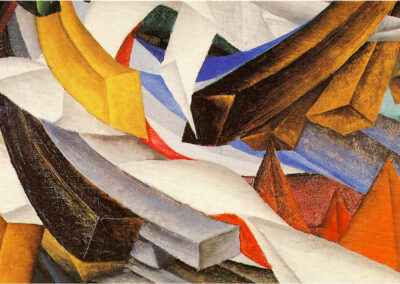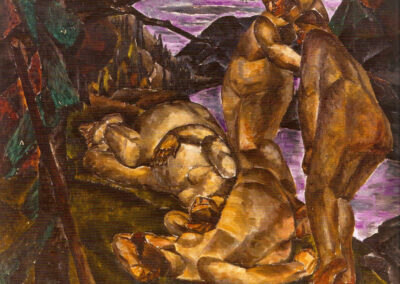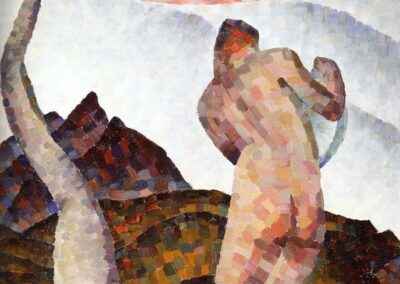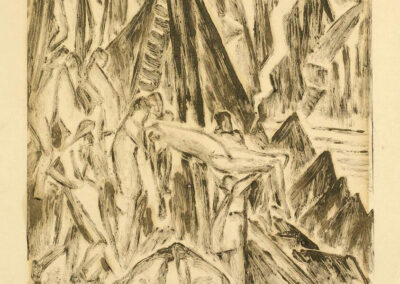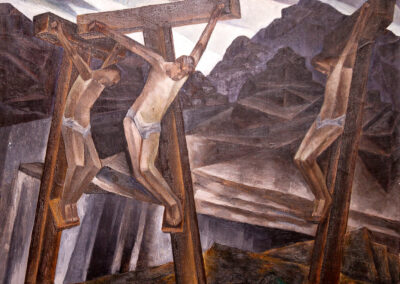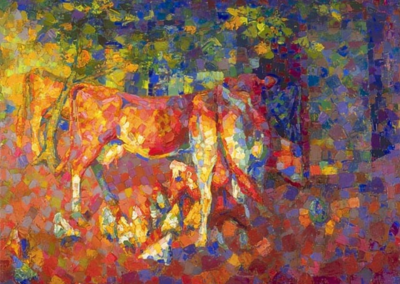Our next Artist You Need To Know is Kathleen Munn (1887– 1974).
Munn received little recognition during her life for her art, often being “on the periphery of the Canadian art scene during her lifetime. She imagined conventional subjects in a radically new visual vocabulary as she combined the traditions of European art with modern art studies in New York. She died at age eighty-seven, unaware that her long-held hope for “a possible future for my work” was about to become reality”, as she posthumously has garnered the status of an artist you need to know. (from here)
Georgiana Uhlyarik, Associate Curator of Canadian Art at the Art Gallery of Ontario, asserts that “Munn will always be a mystery—and this makes her all the more irresistible.” (from the Art Canada Institute | Institut de l’Art Canadien)
Munn was born in Toronto in 1887 (the youngest of six children) : in 1904 she studied art at Westbourne School in Toronto, and one of her teachers was Farquhar McGillivray Knowles. Five years later, Munn began exhibiting her artworks with the Ontario Society of Artists, the Royal Canadian Academy of Arts, and the Canadian National Exhibition. She would briefly attend the Pennsylvania Academy of the Fine Arts in 1915.
Munn studied with the Art Students League (ASL) from 1923 to 1926 in New York : her family was very supportive of this career (not the norm at that time, still, for women in the arts). She also studied at the ASL summer school in Woodstock, New York, with American artists Andrew Dasburg and Max Weber who were both painters informed by cubism. Her interest in international art movements – especially modernism and the artwork of Paul Cézanne – influenced her own painting and by the 1920s Munn had evolved “from the loose colourful brushwork of Impressionism to the more hard-edge geometric fragmentation of natural form”. (Anne Newlands, writing in Canadian Art : from its beginnings to 2000)
Kathleen Munn’s paintings and drawings manifest her interest in Cubism and “she is credited with introducing Post-Impressionism to Canada.” (from the Canadian Women Artists Initiative at Concordia University) She was “active in Toronto in the 1920s and ’30s; she was considered by some as one of the most advanced, if confounding, artists of her time. Discouraged in part by the dominance of the Group of Seven and landscape painting in Canada, she stopped making art around 1939, and by the time of her death in 1974, she was relatively forgotten.” (from here)
During her lifetime, the establishment and critics seemed unsure of how to approach her work and the innovations – both her own, and that influenced by larger international artists – within her artwork. But there were a few voices of appreciation, such as Frederick Housser who wrote [in 1929] that Munn was “probably the only painter in Canada whose canvases show an interest in cubism”, which did not suit the popular styles of painting in Toronto at the time she was practicing and exhibiting.” More from Houser : “More attention might be paid to her if she exhibited in New York or Paris, instead of Canada, where public appreciation of this kind of painting is as yet undeveloped …”
Kathleen Munn passed away at the age of 87, in Toronto.
Munn once asserted that “Art is an adventure, not a habit” and from early in her career also stated that “I believe in myself, since it is all I have.”
But that lack of critical praise and attention has changed, appropriately.
Beginning approximately a decade after her death, many art historians and curators began to give Kathleen Munn a more considered evaluation, both as an artist and in terms of her legacy. The exhibition Kathleen Munn, Edna Taçon: New Perspectives on Modernism in Canada (1988) was initiated by the Art Gallery of York University. It would travel to numerous venues, including the Art Gallery of Windsor, Concordia Art Gallery (Montréal), the Edmonton Art Gallery, the McIntosh Gallery (London, ON), Agnes Etherington Art Centre (Kingston, ON) and the Robert McLaughlin Gallery (Oshawa, ON).
In 2011, the Art Gallery of Windsor mounted the exhibition The Passion of Kathleen Munn which was also later on view at the Art Gallery of Ontario. The latter institution expanded the original show of approximately forty paintings and various works on paper with more drawings and collages by Munn that are held in the AGO archives.
As well, for the last three decades the Art Gallery of Ontario has “become a centre for the art and study of Munn, actively collecting her work and inspiring the next generation of curators and scholars with her archives. Ongoing research and publications have revealed Munn to be an independent, focused and highly original artist who never compromised her passion for her artistic project.” (from here)
One of the most impressive of these endeavours is how The Art Canada Institute | Institut de l’Art Canadien has a fine feature (which you can either read online here or download as a PDF) all about Kathleen Munn’s life and work, and with many more of her artworks that speaks of her ideas and legacy in an in depth and informed manner.
Kathleen Munn’s artwork can be found in the collections of the AGO, the Art Gallery of Alberta, the Art Gallery of Hamilton, Musée d’art contemporain de Montréal, The National Gallery of Canada, The Robert McLaughlin Gallery and other public and private collections.
It is fitting to end this with more of Munn’s own words : “Beauty is a supreme instance of order intuitively felt, instinctively appreciated.”

